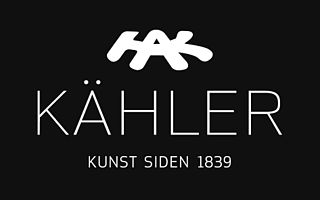 W
WAluminia was a Danish factory of faience or earthenware pottery, established in Copenhagen in 1863. Philip Schou (1838-1922) was the founding owner of the Aluminia factory in Christianshavn. In 1882, the owners of Aluminia purchased the Royal Copenhagen porcelain factory.
 W
WBing & Grøndahl was a Danish porcelain manufacturer founded in 1853 by the sculptor Frederik Vilhelm Grøndahl and merchant brothers Meyer Hermann Bing and Jacob Herman Bing. The trademark backstamp for Bing & Grøndahl (B&G) porcelains is the three towers derived from the Coat of Arms of Copenhagen. The company's Seagull dinnerware series became known as the "National Service of Denmark" in the 1950s when it was found in one tenth of all Danish households. In 1987 the company merged with its primary competitor, the Royal Porcelain Factory under the name Royal Copenhagen.
 W
WHakkemose Brickworks was a Danish brickyard and ceramics factory located at Taastrup, Denmark. The central lake in Hakkemosen is its former clay pit.
 W
WKähler Keramik is a Danish ceramics manufacturer based in Næstved on the island of Zealand.
 W
WKastrup Værk was a pottery and tile works in Kastrup, now a suburb of Copenhagen, on the Danish island of Amager.
 W
WP. Ipsens Enke was a ceramics manufacturer based at Frederikssundsvej 78 in Copenhagen, Denmark. The company was founded by Peter Ipsen in 1843 and was continued by his widow Louise Ipsen and son Berthel Ipsen after his death in 1860. It achieved international success with its replica of antique Greek and Roman ceramics, winning awards at international expositions and opening its own shops in Paris and London. After the turn of the century, it collaborated with artists such as Thorvald Bindesbøll, WillumsenJ and Axel Salto. It closed in 1955.
 W
WRoyal Copenhagen, officially the Royal Porcelain Factory, is a Danish manufacturer of porcelain products and was founded in Copenhagen in 1775 under the protection of Danish Dowager Queen Juliane Marie. It is recognized by its factory mark, the three wavy lines above each other, symbolizing Denmark’s three straits: Storebælt, Lillebælt and Øresund.
 W
WStore Kongensgade Faience Manufactury, active from 1722 to the late 1770s, was a faience ceramics manufacturer located on Store Kongensgade in Copenhagen. It was the first manufacturer of faience in the Nordic countries. It is especially rememberred for its bishop-bowls and tray tables but has also produced decorative tiles for several historic buildings.
 W
WSyberg Keramik was a Danish ceramics manufacturer based in the Valby district of Copenhagen, Denmark. It was created by Hans Syberg and later taken over by Lars Sybryg, two sons of the artists Fritz and Anna Syberg. It existed from 1928 until the 1980s and was based in Valby